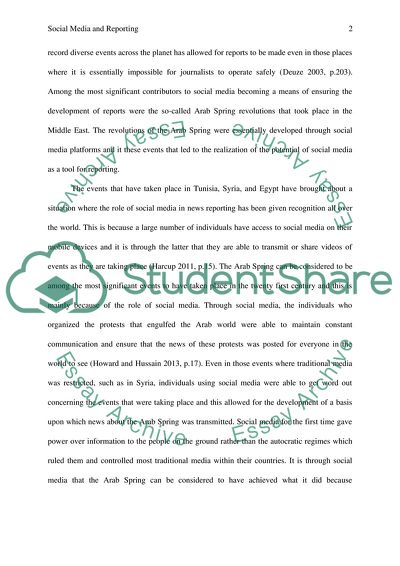Cite this document
(Social Media and Reporting Case Study Example | Topics and Well Written Essays - 3000 words, n.d.)
Social Media and Reporting Case Study Example | Topics and Well Written Essays - 3000 words. https://studentshare.org/media/1868403-with-easy-access-to-social-media-ordinary-people-can-now-report-on-events-quicker-and-better-than-journalists-discuss-in-relation-to-examples-of-social-media-use-in-the-so-called-arab-spring-revolutions
Social Media and Reporting Case Study Example | Topics and Well Written Essays - 3000 words. https://studentshare.org/media/1868403-with-easy-access-to-social-media-ordinary-people-can-now-report-on-events-quicker-and-better-than-journalists-discuss-in-relation-to-examples-of-social-media-use-in-the-so-called-arab-spring-revolutions
(Social Media and Reporting Case Study Example | Topics and Well Written Essays - 3000 Words)
Social Media and Reporting Case Study Example | Topics and Well Written Essays - 3000 Words. https://studentshare.org/media/1868403-with-easy-access-to-social-media-ordinary-people-can-now-report-on-events-quicker-and-better-than-journalists-discuss-in-relation-to-examples-of-social-media-use-in-the-so-called-arab-spring-revolutions.
Social Media and Reporting Case Study Example | Topics and Well Written Essays - 3000 Words. https://studentshare.org/media/1868403-with-easy-access-to-social-media-ordinary-people-can-now-report-on-events-quicker-and-better-than-journalists-discuss-in-relation-to-examples-of-social-media-use-in-the-so-called-arab-spring-revolutions.
“Social Media and Reporting Case Study Example | Topics and Well Written Essays - 3000 Words”. https://studentshare.org/media/1868403-with-easy-access-to-social-media-ordinary-people-can-now-report-on-events-quicker-and-better-than-journalists-discuss-in-relation-to-examples-of-social-media-use-in-the-so-called-arab-spring-revolutions.


